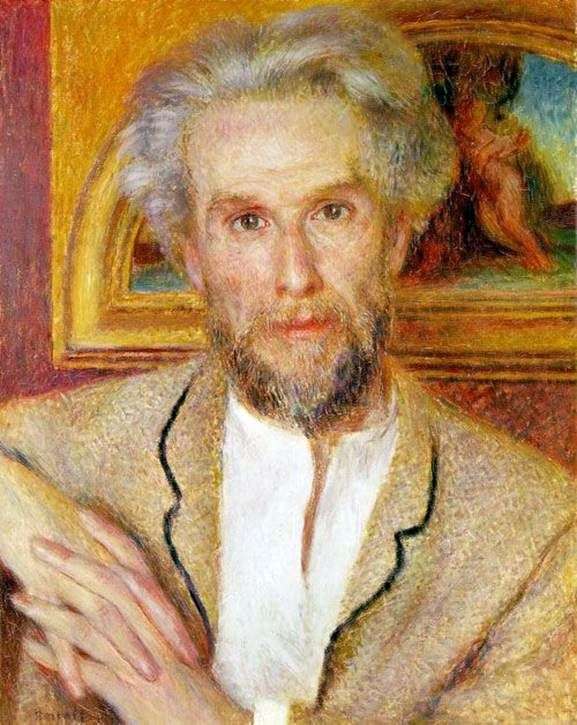
“… His admiration for Viktor Shoke, who not only bought the works of Renoir and other impressionists, but also became an active promoter of their work among his friends, as well as at subsequent impressionist exhibitions, Renoir expressed in two portraits. Written in 1875 and 1876 , they convey not only the appearance of the model, but its noble spiritual essence. These portraits represent the peculiarities of the psychological analysis of the inner world of those portrayed, typical of Renoir.
It is interesting to compare the portraits of Choquet, painted by Renoir, with the portraits of Victor Choquet, made in 1876-1877 by Paul Cezanne. By the way, it was Renoir, wanting to help his completely unknown at that time and not recognized by the public friend, introduced Shoke to Cezanne, and the collector became an ardent admirer of this painter.
Comparing the portraits of Choquet, painted by Renoir, we can see how the artistic image was perfected. A full-face portrait is written in such a way that we see not only Shock-inherent habits, for example, to keep the fingers together, but also the background of the portrait, which seems to be a sketch by Delacroix, which Renoir may have written at the request of the customer. Despite the fact that Shoke’s inspired face with thick gray hair and thoughtful eyes looks at us directly and attentively, it looks somewhat flat, lacks the necessary volume and this makes it less expressive and prominent. The scene on the etude of Delacroix seems random and, being directly behind the head of Choquet, somehow contrasts with his appearance. It can be seen that this wish of the customer did not find an adequate artistic solution in the portrait itself.
If Renoir undertook to paint another portrait, this fact best of all tells us that the artist was extremely demanding of himself when embodying his artistic ideas and sought their full expression in his portraits as his artistic taste and understanding of the internal and external image of the portrait demanded. .
The second portrait of Viktor Shoke, which is similar in size and composition to the first portrait, has some differences, which, although not striking the audience, change the appearance of the model significantly and psychologically accurately.
Renoir slightly – by three quarters – turns her head to Choke, and she immediately acquires the necessary volume and relief. His clever penetrating eyes in deep orbits, a crooked nose, sharp cheekbones with strong wrinkles, high forehead, become more expressive. His gray hair is brilliantly painted, and the quick movements of the brush transmit the hair in such a way that it seems they crumble, slightly shaken by the imperceptible movement of air. Shock is represented in a shirt with an open collar, and a hand with long, thin fingers pulls at the tip of his short-cropped beard. Probably it was in this position and with such an expression that Choquet looked at the pictures he loved.
The background of the portrait is painted in a light tone, and short brush strokes of green and red paint have left their mark on it. In general, the background does not distract our attention from the expression of the face and appearance of Viktor Shock, and therefore the portrait looks unusually expressive. Renoir created a masterpiece of psychological penetration into the inner world of the portrayed, and he did it by noticing the most characteristic form of the model, when Choquet probably was impressed by the perception of a work of art. A fleeting state of man is captured here, but this instant determines the highest meaning of the whole life and activity of the collector Viktor Shoke.
Comparing the portraits of Renoir with the portraits of Choquet, written by Cezanne, we can say that the latter, depicting the model and busting and growing, sitting in the chair, so that behind the figure of Shock, the pictures he collected are visible, could not so precisely and mentally imagine the appearance of the collector. In the portraits of Cezanne there is a desire to thank his enthusiastic admirer and buyer, who acted contrary to the public opinion of those years. It is evident that Cezanne wants to present Choquet as dignified and as possible, but it seems that further than this Cezanne could not go. In the portraits of Renoir, we see not only the appearance of a person. When Renoir, in the second portrait of Choquet, refused to convey everyday details, it became possible to understand the passionate soul and keen intellect of this outstanding discoverer and connoisseur of the art of the Impressionists… “
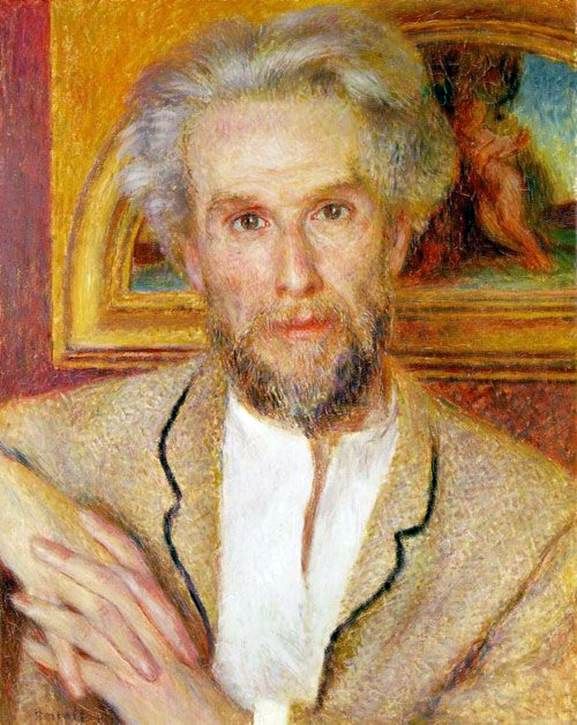 Portrait de Victor Choquet – Pierre-Auguste Renoir
Portrait de Victor Choquet – Pierre-Auguste Renoir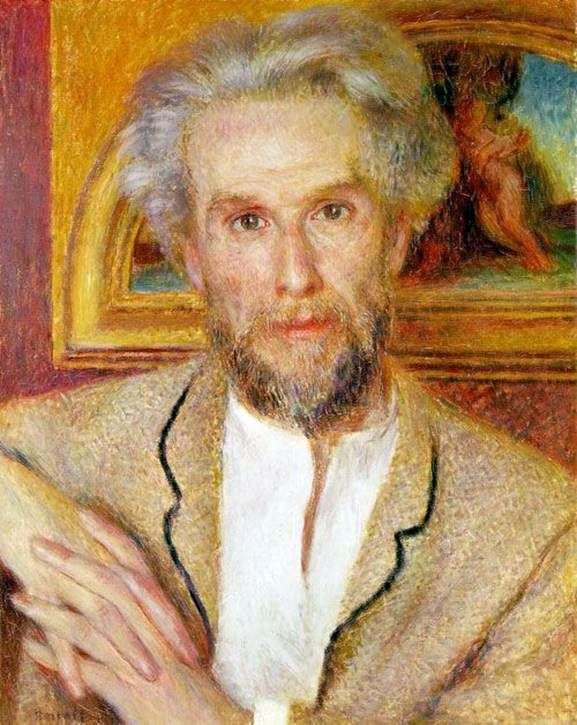 Retrato de Victor Choquet – Pierre Auguste Renoir
Retrato de Victor Choquet – Pierre Auguste Renoir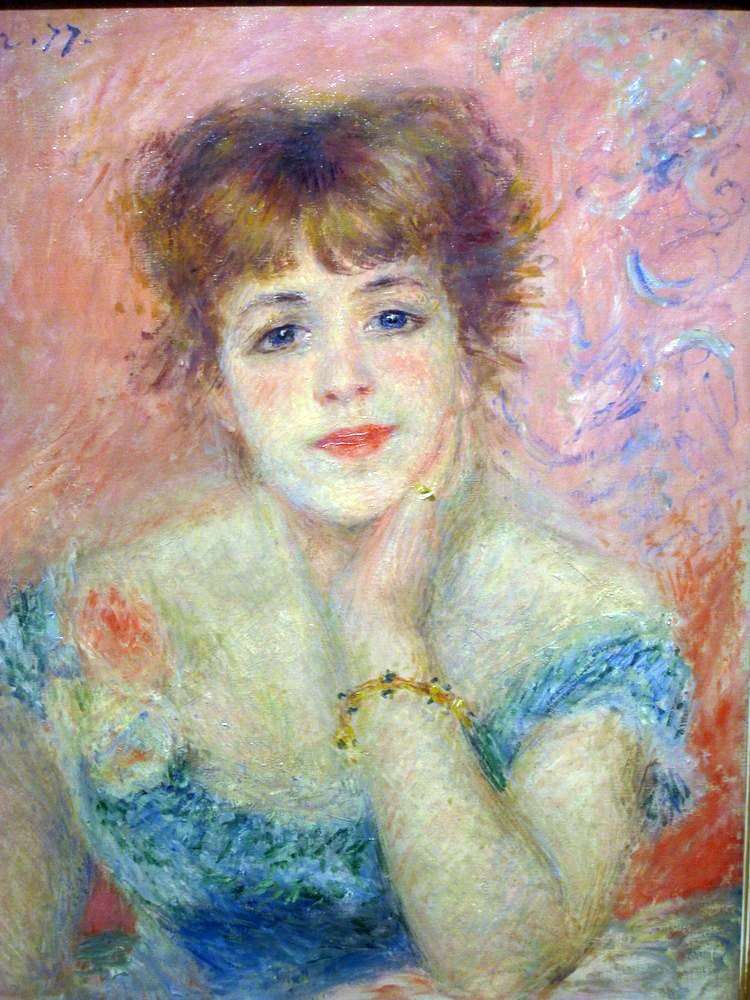 Portrait of Actress Jeanne Samary by Pierre Auguste Renoir
Portrait of Actress Jeanne Samary by Pierre Auguste Renoir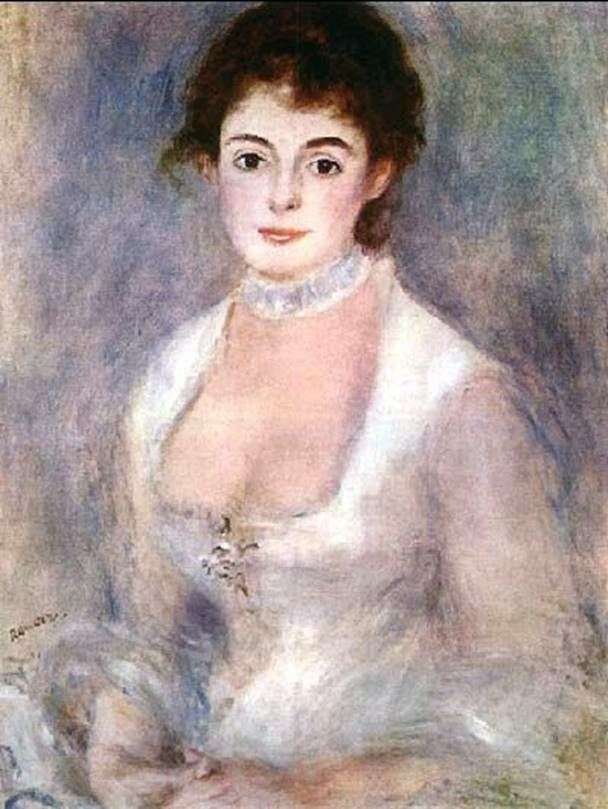 Henrietta Henriot by Pierre Auguste Renoir
Henrietta Henriot by Pierre Auguste Renoir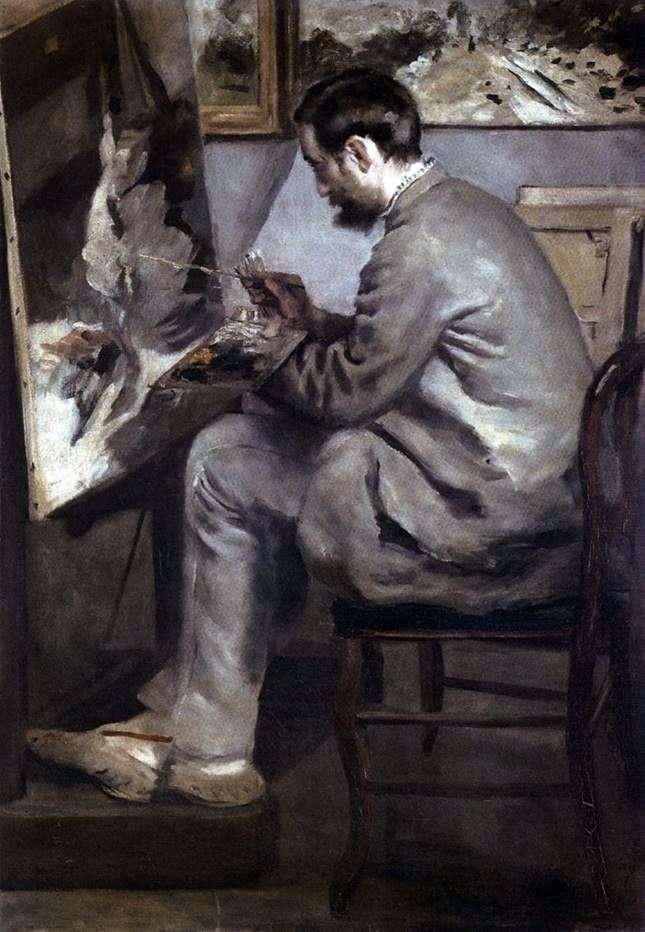 Portrait of Frederic Basil at the Easel by Pierre-Auguste Renoir
Portrait of Frederic Basil at the Easel by Pierre-Auguste Renoir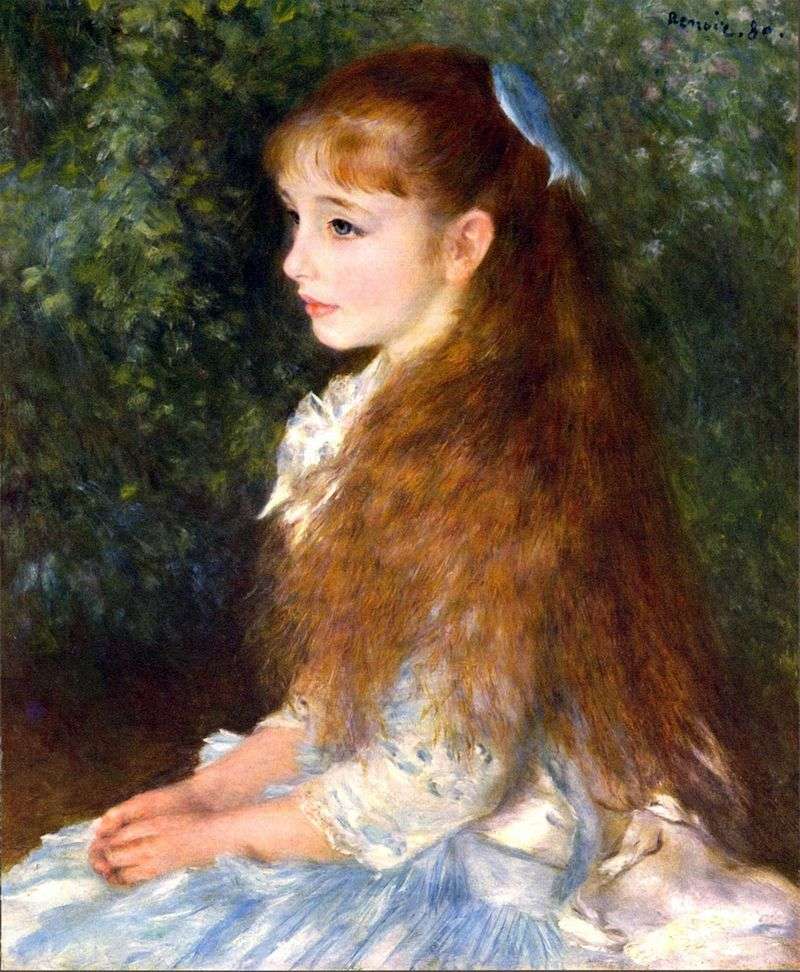 Portrait of Irene Caen d’Anverse by Pierre Auguste Renoir
Portrait of Irene Caen d’Anverse by Pierre Auguste Renoir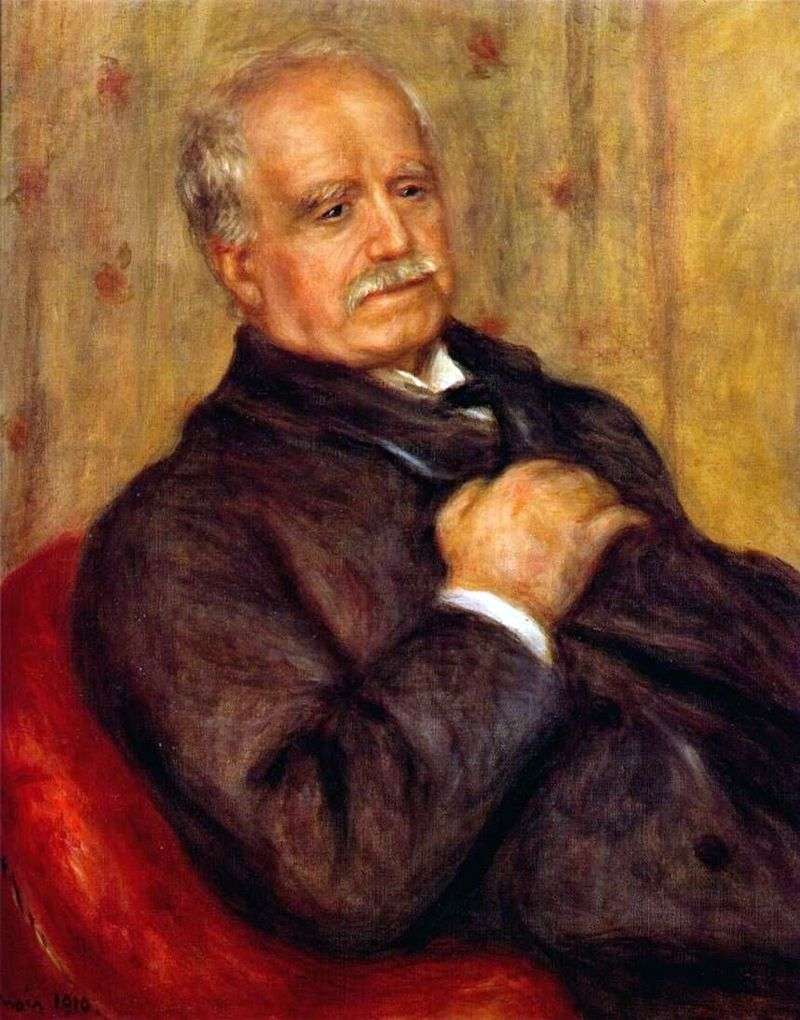 Portrait of Durand-Ruel by Pierre-Auguste Renoir
Portrait of Durand-Ruel by Pierre-Auguste Renoir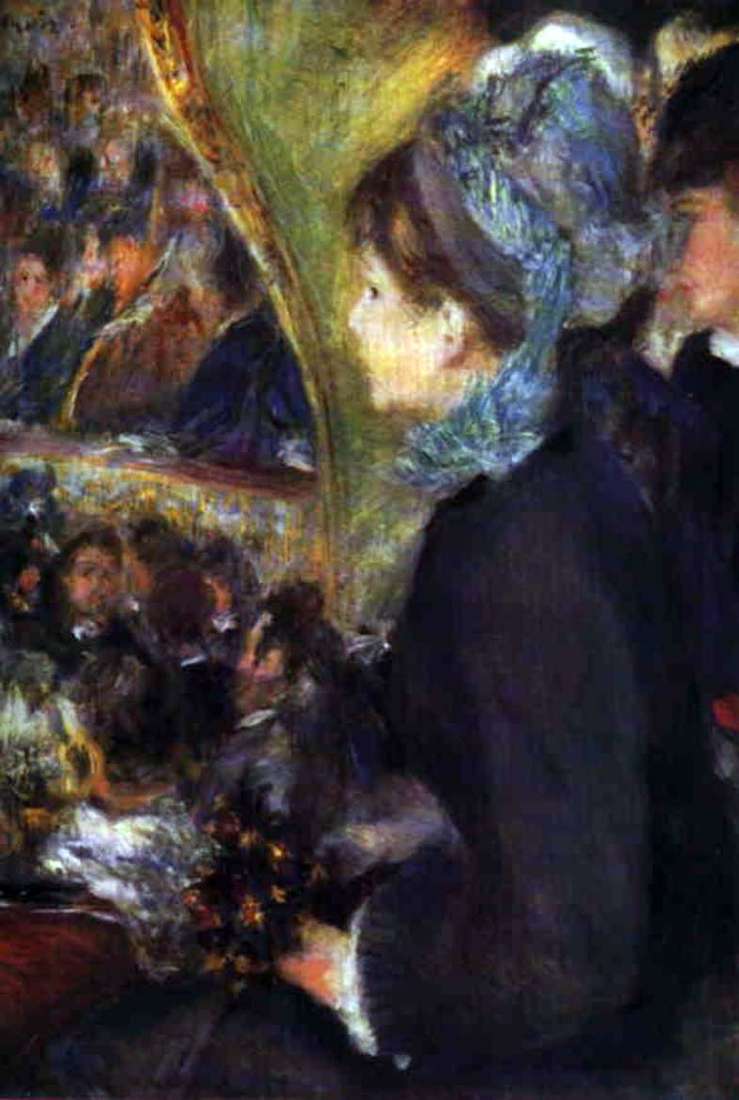 First exit by Pierre Auguste Renoir
First exit by Pierre Auguste Renoir